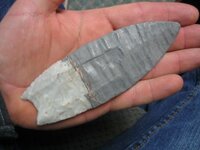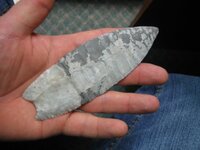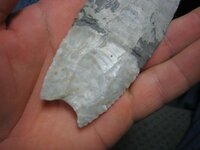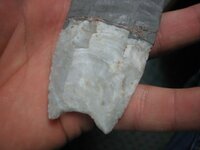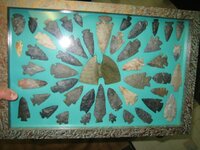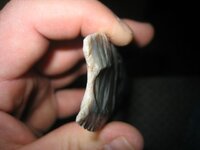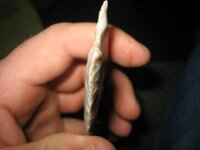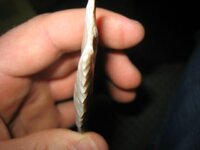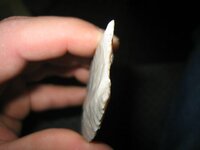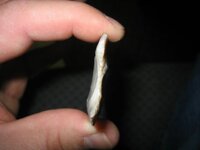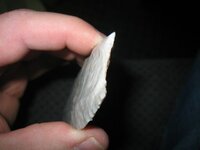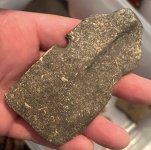Bent-Twig
Sr. Member
This is one of my finds that when found you just have to sit in the field and say "WHY??".
I put some clay on it to try and get a feel for what the size of this thing might have been. I play around with temporary restorations on my broken stuff, but this one is too big of a project for me. I tried to get a feel for the size , but was unable to get the flaking and color satisfactory. left it like this and put it in a case a year or so ago. Anyway my question is do you think this is a close guess of the size? Found a few years ago in a field in Huron Co. Ohio.
Twig.
I put some clay on it to try and get a feel for what the size of this thing might have been. I play around with temporary restorations on my broken stuff, but this one is too big of a project for me. I tried to get a feel for the size , but was unable to get the flaking and color satisfactory. left it like this and put it in a case a year or so ago. Anyway my question is do you think this is a close guess of the size? Found a few years ago in a field in Huron Co. Ohio.
Twig.
Attachments
Upvote
0


